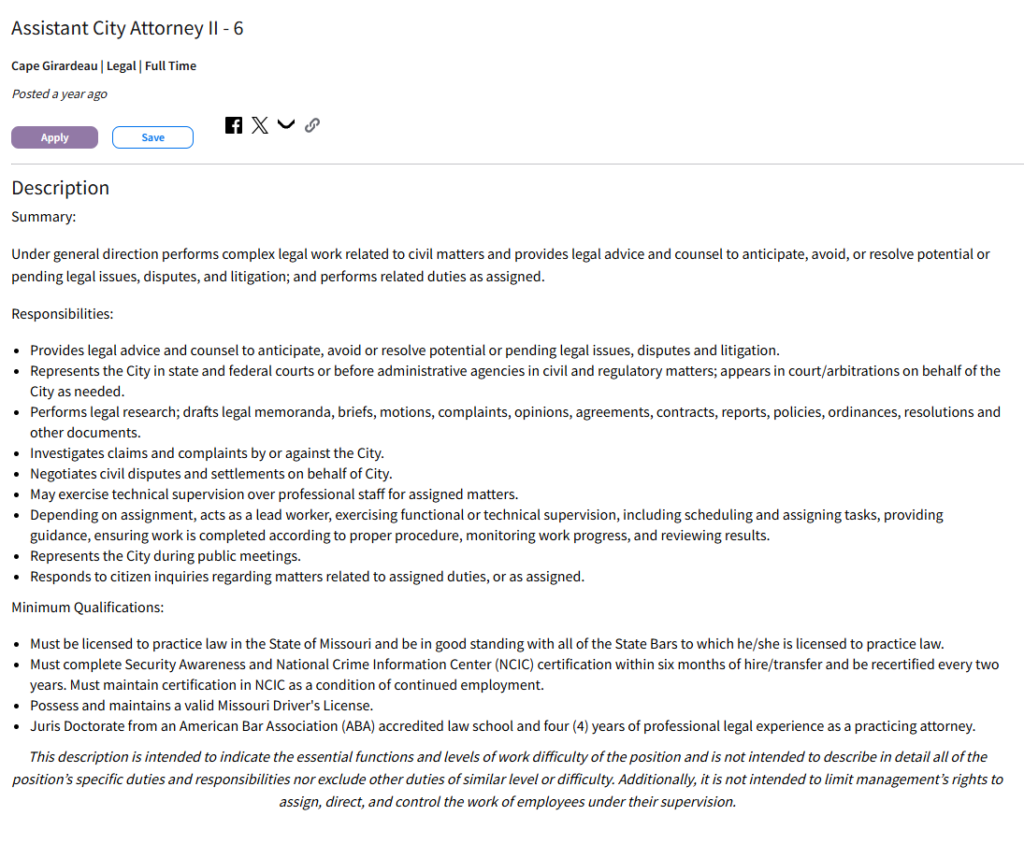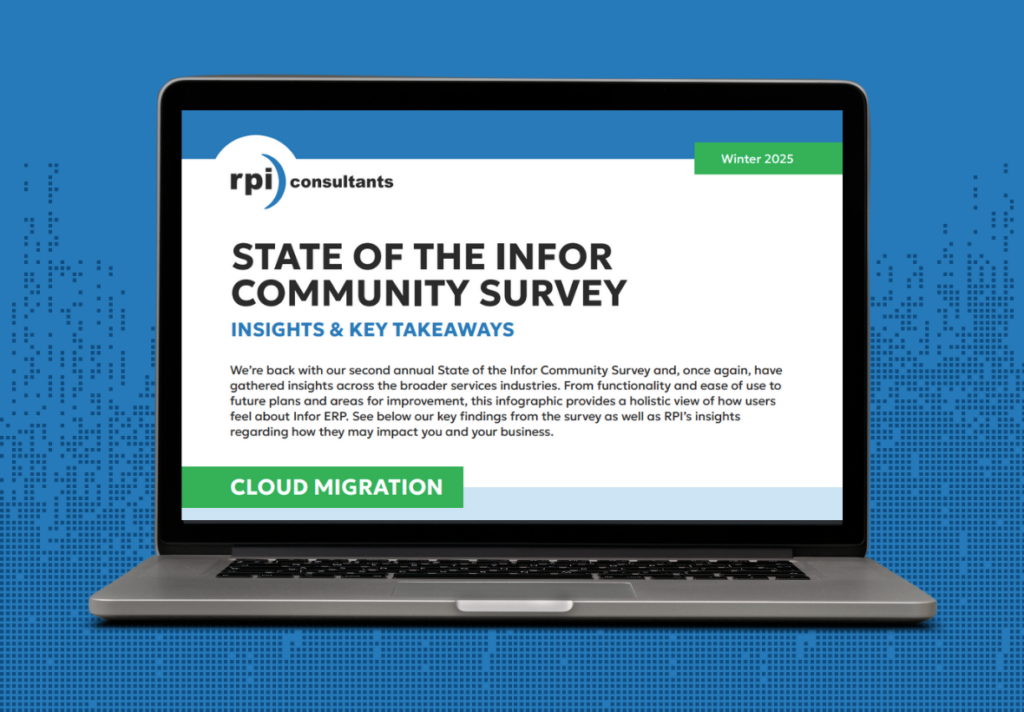Hiring the right people can be expensive. Businesses spend on average $4,700 per hire, according to the Society of Human Resources (SHRM). And those costs can increase exponentially for executive-level positions.
With so much involved in the hiring process, it pays (or saves) to have an informed Talent Management system.
Infor CloudSuite’s Talent Management functionality can decrease your time to fill by automating the creation of job descriptions and postings, increasing internal candidate engagement, and providing tools to evaluate job prospects in a consistent manner.
The key to your system’s ability to do this depends on providing the right building blocks during the implementation. And a great starting point is to review your existing job descriptions to ensure they are structured, standardized, and optimized. This lets you and your team extract key criteria and enter them into the system effectively.
In this post we’ll talk about five steps your team can take to create clear, standardized, and effective job descriptions in preparation for a Talent Management implementation.
Step 1: Standardize & Organize Job Descriptions
When starting this process, it’s often easiest to first review and categorize all existing job descriptions. Creating a centralized repository for these descriptions, accessible to those responsible for job postings, is a great place to begin.
From there, focus on standardizing the language and formatting. Take the time to ensure that roles, duties, and responsibilities are clearly defined and consistent across the board. While it may seem simple, this clarity is critical to building a foundation for your Talent Management system.
You’ll also want to verify that all common descriptions and qualifications are uniform across similar positions. Store them in an organized, easily accessible location. This will prevent redundant or conflicting information from being entered into the system.
Step 2: Define Requirements
Clear job titles and descriptions set precise expectations for both employers and employees by outlining specific roles and responsibilities. Without this clarity, candidates and employees may struggle to understand the scope of the role, leading to decreased productivity and job satisfaction.
It follows that the next step you should take when creating them is to review the credentials and education criteria required for each position. Identify and document roles that mandate specific degrees, experience, certifications, or licenses.
In addition to providing structure, these requirements help ensure alignment between job expectations and organizational goals. By defining necessary requirements, you can streamline candidate selection, and in turn reduce mismatches and turnover.
Lastly, well-documented requirements enable better workforce planning. They provide HR teams with visibility into skills gaps, guiding training and development efforts to upskill internal talent, which can ultimately save your business time and money.
Step 3: Differentiate Competencies & Skills
They sound similar but they’re actually quite different. Competencies and skills both play critical roles and understanding the distinction between them is crucial for tracking employee development effectively. As such, you’ll need to identify them clearly in your job descriptions.
Here’s how these two criteria compare:
- Skills: These are measurable abilities, such as typing 100 words per minute or coding in Python
- Competencies: On the other hand, competencies are closer aligned to behavioral attributes, such as leadership or problem-solving.
Clearly defining how you want to track and manage these elements within your system supports long-term talent development. When separating these criteria out for roles, be sure to be consistent in their application. That is, a skill for one job should not be competency for another. Uniformity is key.
Step 4: Optimize for the Candidate Experience
By now, it’s evident that crafting uniform and consistent job descriptions benefits organizations. But the reasons to prioritize this objective do not end there—optimized job descriptions also appeal to potential candidates, both internal and external.
Candidates often search for jobs using specific titles that match their experience and career aspirations. If your job titles and their respective descriptions are unconventional or vague, potential applicants might overlook your postings, assuming a mismatch between their skills and the role.
Moreover, a well-written job description serves as a reflection of your employer brand, providing candidates with a glimpse into your company culture and values.
So, when there is alignment, it not only attracts suitable candidates but also ensures they resonate with your organization’s ethos. Well-crafted descriptions can enhance your employer brand and improve application rates and as a result attract more of the right employees and boost retention.
All that being said, focus on making your job descriptions engaging and informative to prospects while ensuring they also align with the structured format required for your Talent Management system.
Step 5: Create with the End in Mind
Last but certainly not least, when structuring job descriptions, it’s essential to consider the full scope of your Talent Management system and any future module implementations.
By working backward from the modules you plan to deploy, you can ensure job descriptions are designed to support broader Talent Management goals, reducing the need for future rework.
For example, performance, succession, and career planning modules rely on well-structured job descriptions. By establishing a solid foundation with clear, detailed, and well-organized job descriptions upfront, you ensure they are ready to support any additional modules you implement in the future without the need for further revisions.
See below an example of a clear, optimized, and effective job description.

Laying the Groundwork for Long-Term Success
Standardized job descriptions can streamline key HR processes such as performance evaluations, salary benchmarking, and career development planning. And a consistent framework helps identify skill gaps, guide training programs, and facilitate internal promotions.
Additionally, well-structured job descriptions can mitigate legal risks by ensuring compliance with labor requirements, pay transparency laws, and providing definitive expectations for performance management.
While developing structured job descriptions and qualifications requires effort upfront, it provides a solid foundation for talent management and employee life-cycle success.
A well-organized approach reduces future manual work, improves data consistency, and enhances both internal operations and external recruiting efforts.
At RPI Consultants, we understand that every organization’s needs are unique. And we also understand that crafting job descriptions with the end in mind may warrant approaching the aforementioned steps in a different order.
Our team can help you develop a tailored strategy for organizing and establishing job descriptions that align with your Talent Management goals within Infor CloudSuite.
We’ll walk you through how this impacts key modules relevant to your organization and ensure a customized approach that meets your specific needs. Contact us to discover how we can help you get started on the right path.
Get Help With Talent Management Job Descriptions


